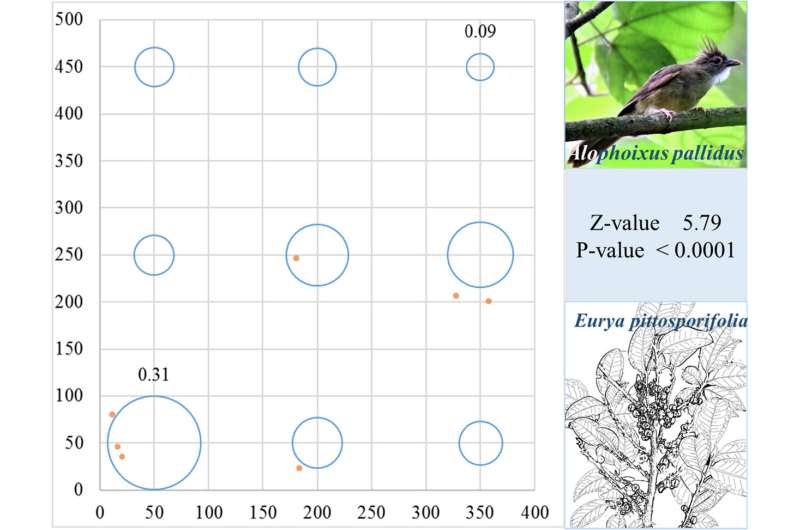Autonomous recording units can be added to standardized protocols of forest plot network

Long-term monitoring of vegetation plots is one of the largest investments in ecology and evolution. Using the vast amount of plant data generated by vegetation plots toward animal or plant-animal studies with remote sensing tools is an efficient way to leverage these investments.
Another potential direction is to use automatic vocal identification on larger plots to collect data on the locations of specific species of animals that can be interrelated to the data on plants.
In a study published in Remote Sensing in Ecology and Conservation, researchers from Xishuangbanna Tropical Botanical Garden (XTBG) of the Chinese Academy of Sciences and Guangxi University documented interactions between frugivorous birds and fruiting trees on a ForestGeo plot in southwestern China. They deployed nine autonomous recording units (ARUs) in a grid on the 20-ha plot, placed at least 150 meters from each other, and used the freeware program Animal Sound Identifier (ASI) to detect bird vocalizations.
In total, the researchers acquired 11,789 10-min sound recordings in the two (dry and wet) seasons. All the species were most detected in the wet season, which is the breeding season for birds in Xishuangbanna. They found that there were more significant positive relationships between ASI detection values and the numbers of mature individuals of fruiting tree species than would be expected by chance, especially in the dry season.
The analysis identified 54 interactions between bird and tree species with significant positive relationships. Follow-up observations of birds on the plot validated that such interactions were more likely to be observed than other interactions.
The researchers demonstrate that ARUs and automated voice identification can map the distribution and/or movement of vocal animals across large vegetation plots, allowing this data on animals to be inter-related to that on plants.
"Thus, ecoacoustics on long-term vegetation plots has the potential to provide essential information about plant-animal interactions," said He Xuelian from XTBG, corresponding author of the study.
The researchers suggest that ARUs be added to the standardized protocols of the plot network, leveraging their vast amount of information about vegetation to describe plant-animal interactions currently, and monitor changes in the future.
More information: Anran Dong et al, Passive acoustic surveys reveal interactions between frugivorous birds and fruiting trees on a large forest dynamics plot, Remote Sensing in Ecology and Conservation (2022). DOI: 10.1002/rse2.310
Provided by Chinese Academy of Sciences


















